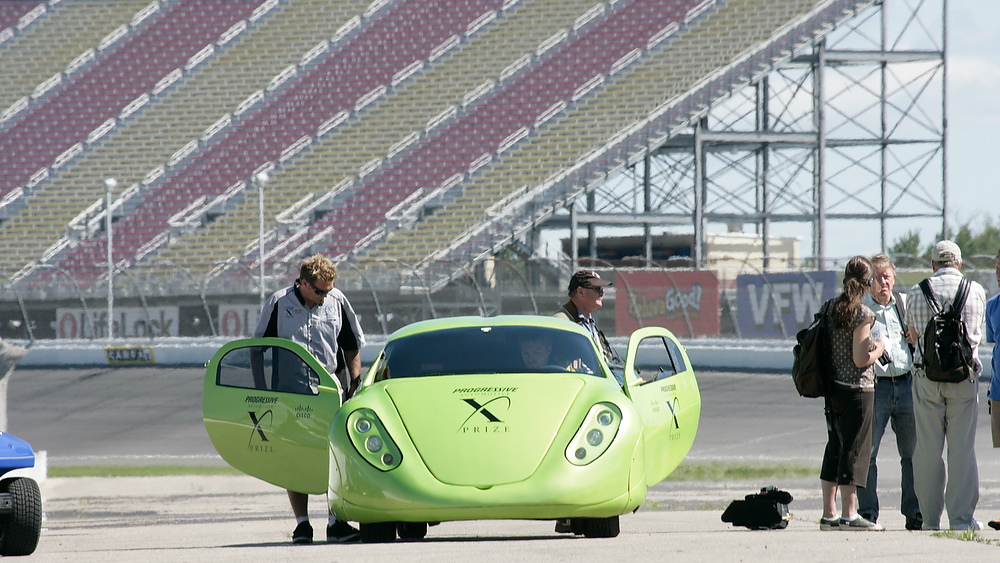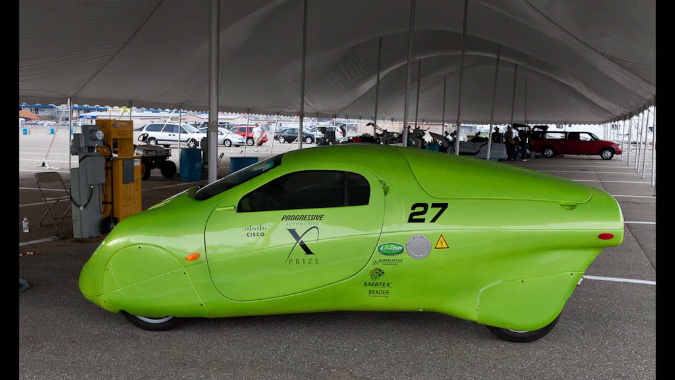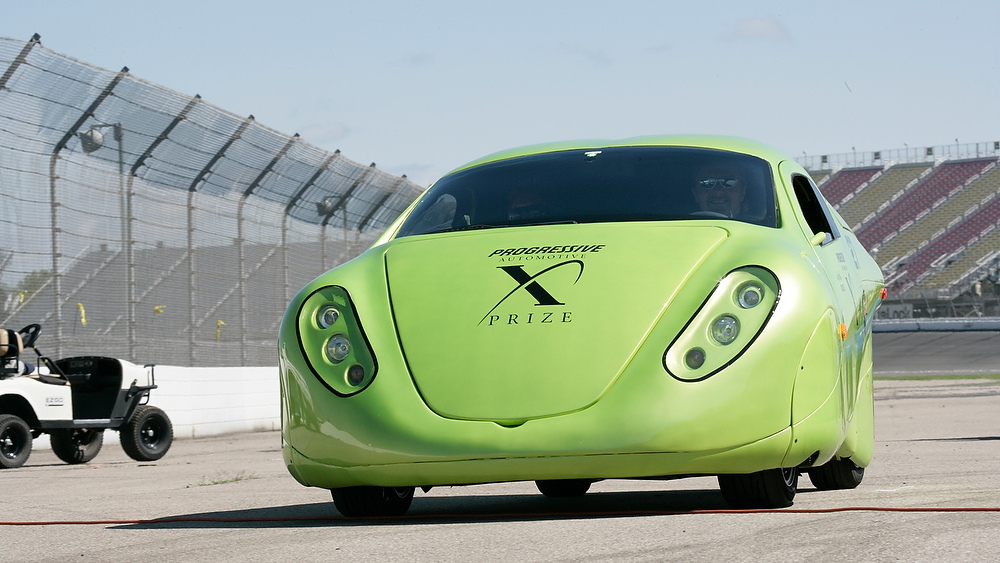For the past few years, small and medium-sized automakers have looked towards the prestige of winning the Progressive Insurance Auto-X Prize. for the X-Prize.
Initially set up as a way of encouraging innovation and inspiring the next generation of fuel efficient vehicles, the Automotive X-Prize has slowly whittled the field of competitors down from over one hundred to just a handful.
As the final phase of validation began last month, several electric vehicle teams remained hopeful about getting a piece of the $10 million prize fund. In return, they had to prove their vehicles capable of at least 100 miles-per-gallon equivalent, or MPGe, as well as pass a series of speed and handling tests.
At a ceremony today in Washington DC, the winners of the three classes were announced, and two were indeed electric cars.
The Li-Ion Motors Corp. "Wave II" won the $2.5 million Alternative Side-by-Side Class, and the Peraves X-Tracer "E-Tracer" was awarded another $2.5 million purse in the Alternative Tandem Class.
The Wave II "demonstrated outstanding low mechanical and aerodynamic drag" that resulted in a rating of 187 MPGe in its track and lab testing, 0-to-60-mph acceleration of 14. 7 seconds, and more than 100 miles of real-world range.
The tandem E-Tracer used two outrigger wheels to stabilize it at low speeds, and it led the competition with more than 200 MPGe. It provided more than 100 miles of range, and it had motorcycle-quick acceleration, hitting 60 mph from a standing start in just 6.6 seconds.
While it may look like a motorcycle, it uses similar powertrain technology (licensed from AC Propulsion) to two much better-known electric vehicles: the Tesla Roadster and the limited-production Mini E.
[For information on the Mainstream class winner, Edison2's Very Light Car, see our sister site, GreenCarReports.com]
And the results don’t surprise us one little bit.
While press releases from California-based Aptera Motors would have anyone believe their Aptera 2e was the best vehicle at the event, those responsible for choosing the winner disagreed.
The Li-Ion Wave II is similar in appearance to the much-hyped Aptera, but features a conventional four-wheel placement combined with a futuristic, ultra-aerodynamic body.
Founded in Nevada in 2000, Li-Ion Motors Corp. has had an interesting past, including work with NASA and the U.S. military.
But it mainly focuses on conversions. Rather than make electric cars from scratch, the company’s corporate strategy has been based around adapting existing cars to electric power, including BMW’s Mini, Chrysler’s PT Cruiser and Crossfire, and Daimler’s Smart ForTwo.
Of course, winning the prize is bound to raise interest in the Li-Ion Wave II, but we’re unsure if it will ever progress beyond the ultra-efficient design which achieved a massive 182.3 MPGe during the X-Prize fuel efficiency tests.
After all, more conventional and more practical vehicles are now set to reach the marketplace, all from automakers for whom the $2.5 million prize fun seems a little small. Regular readers know by now that the list includes the 2011 Nissan Leaf, the 2011 Chevrolet Volt, the 2011 Coda Sedan, and the 2011 Fisker Karma just within the next 12 months.
We’d expect Li-Ion to focus its prize funds on continuing research into conversion technology, improved battery and drivetrains and perhaps, conversions on a more cost-effective scale.
As for the Wave II? It’s likely to remain a niche market vehicle, just like the fully enclosed, motorcycle known as the E-Tracer.
As for Aptera? WIth time to lick its wounds, expect the company to return to issuing hopeful statements about its ability to revolutionize the auto world, one day.
[Progressive Automotive X-Prize]

















